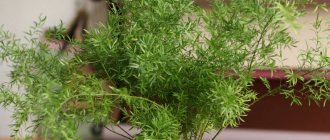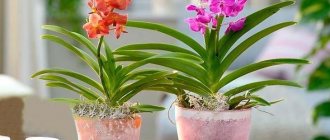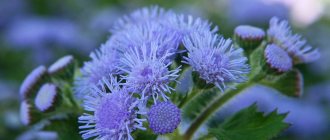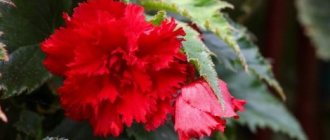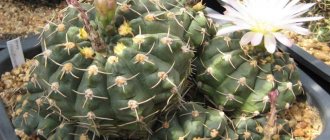The prickly pear cactus is one of the most interesting plants on the planet. This is the most common of the cactus genera. This largest succulent can go without water for months and grows in even the most nutrient-poor soils.
Prickly pear, like most cacti, is native to South America. It can grow in deserts and semi-deserts under the hot, scorching sun, as well as in the tropics and on the coasts of salty seas. Cacti are found all over the world. They are found in a wide variety of natural climate zones of other continents.
There are about 300 species. Cacti are unusual and unique in their shape and size. Different countries have their own representatives of these unusual plants, which farmers have adapted to their conditions and are happy to grow on their plots or plantations. Hobbyists grow them on windowsills or in greenhouses.
Prickly pear cactus description of species and varieties
The plant can reach a height of up to 4 meters. Within the prickly pear subfamily, there are different types of stems - globular, oval, cylindrical, discoid or articulated. Cacti can be vertical or creeping. The development of the root system does not occur inside the soil, but across its entire width.
The plant blooms beautifully, usually with large or medium-sized single flowers. These cacti are one of the few that have edible parts - fruits that form after the flowers wither. The fruits are sweet, fleshy and juicy; the pulp contains many flat seeds covered with a thick shell. Prickly pear fruits are covered with glochidia, small spines, just like the rest of the plant. Only the cactus itself has hard thorns.
Small glochidia are found in fascicles. They cause a lot of trouble to a person who carelessly touches the plant, driving their tiny spines into the skin.
Opuntia fig
Opuntia ficus-indica, the most famous succulent, is also known by other names such as prickly pear, Indian fig, Indian prickly pear, ficus indica, mother-in-law cactus (tongue). In nature, cacti are quite tall plants. “The fig cactus grows up to 4 meters in height and up to 2 meters in diameter. Prickly pear is not suitable for growing at home, but does well in a greenhouse.
The edible cactus blooms twice a year. Prickly Pear Flowers Are Multi-Colored – The flowers of the prickly pear are red, yellow or orange and are as colorful as its fruit. The fruits of the prickly pear are red, sweet and juicy. They are not only eaten raw, but also used for cooking.
Prickly pear is healthy and the fruit is nutritious and rich in vitamins and minerals. "Indian fig" is widely used in folk medicine and cosmetology.
Prickly pear
Opuntia microdasys - the native habitat of the cactus is central Mexico (Hidalgo state) in a mountainous area at an altitude of 1000 m above sea level. It is also found in North and South America and the Galapagos Islands.
This shrubby, branched plant is considered medium-sized, its height is about half a meter. The fleshy, flattened, green stems are completely covered with cuticles (axillary buds) that contain tiny, spiny, skin-like glochidia.
In the wild, this small hairy prickly pear blooms with beautiful lemon-yellow flowers 5-7 cm in diameter. In captivity, i.e. When grown at home, the plant rarely blooms. Therefore, the prickly pear likes to fruit in open habitat, producing red, oblong fruits.
Opuntia subulata
The genus Opuntia subulata, another name for the cactus "Austrocylindropuntia", has perhaps the most original form for a cactus. It's amazing how the cylindrical, thick stems of prickly pear look. They are covered with long white hairs. The stems have sharp, needle-like spines, as well as leaves, which the cactus sheds over time. Succulent stems stretch upward and grow strongly.
Opuntia subulata is a fast-growing plant, but at home it hardly blooms. In the wild, the flowers appear on the top of the stem and are yellow, orange, or bright red.
This species is often grown as a rhizome for other prickly pears. If grown as a house cactus, it will need a sunny place, but the prickly pear will grow even better and delight with its unusual appearance in a bright, airy greenhouse.
Prickly pear
Opuntia Vulgaris is native to the subtropical regions of South America. In its natural habitat, this type of cactus grows up to 5-6 m in height. She is considered the ancestor of all other prickly pears. The cactus grows quickly, forming bizarre bushes.
Opuntia has green, elongated, stem-like stems with few thorns, with thick, succulent segments growing from one another. The segments also form small leaves that fall off over time. The plant is equipped with sharp, numerous glochidia in the areoles. In the wild, the prickly pear blooms with beautiful yellow flowers, which is rarely seen at home. The prickly pear bears fruit from mid-summer to almost the end of summer. Bright burgundy-red, fleshy and juicy fruits reach 10 cm in size and weigh 100-300 grams.
Almost all parts of the plant are used in the household. The fruits and stems are food for people and domestic animals. The cactus is used for cosmetic and medicinal purposes. The flowers are used to make tea. The seeds are used to obtain healing oil. The plant is processed to produce glue and dyes.
Opuntia brazilian
Brasiliopuntia is a tree-like prickly pear. In the wild it can reach 20 meters in height. The favorite habitats of brasiliopuntia are near tropical rainforests. Therefore, those who want to grow this plant at home will have to take into account its size, as well as its love for moisture and regular watering.
Leaf-like, flat stems grow from the prickly trunk of the cactus. Fleshy dark green leaves are about 15 cm long. The needles, one and a half centimeters long, are evenly spaced and emerge from the cuticle. The cactus blooms with small (6 cm) yellow or beige flowers, which open alternately, as if prolonging the flowering time. At home, the cactus blooms very rarely.
The spherical or slightly oval fruits are small - 3-4 cm. The sweet-tasting fruits have a pleasant color, ripen yellow, red, orange and even purple with large hard seeds inside.
Garden prickly pear
Prickly pear is well suited for growing indoors, on a windowsill or outdoors in the garden. “The garden prickly pear is one of the few cacti that are not afraid of cold and snowy winters. The prickly pear, which proudly endures the cold in the open ground, will delight exotic lovers with its attractive, unusual appearance. And if we talk about landscape design, the garden prickly pear is a real find, creating colorful rockeries and lush flower beds. The buds appear in early summer, open in the sun, and the plant blooms.
Like any indoor and garden plant, it requires care: the right place for planting, watering, fertilizing and, possibly, winter warmth. But all efforts are rewarded, because the cactus brings joy and aesthetic satisfaction.
In addition, home cactus has medicinal properties and can be used as a diuretic and anti-inflammatory agent. It is good for headaches and hangovers. The juice contains substances that promote wound healing and antibacterial properties.
Opuntia monacantha
Opuntia Monacanta is a highly branched cactus with oval, flattened stems. The plant is covered with areoles with spines and glochidia. The cactus blooms with large yellow flowers 5-8 cm in diameter. Thanks to pollination, the prickly pear bears fruit, producing juicy, fleshy red fruits 5-6 cm long.
Growers love to grow Prunus monacanth at home because of its intricate bushy form and ease of cultivation.
Berger's prickly pear
Opuntia bergeriana is a common shrub cactus, quite tall - 4-5 m. Covered with thick, fleshy, elongated stems 40 cm long. Unlike others, this species of Opuntia blooms at a young age. During the flowering period, the plant is abundantly covered with bright red, medium-sized flowers. The stems of cacti are evenly dotted with halos of long sharp thorns.
At home, the height of the prickly pear is usually just over a meter, and the length of the stem leaves is about 25 cm. Proper care ensures abundant flowering and delights everyone with its beauty.
Care
Lighting
The cactus loves light very much, especially when there is a lot of it. The best option would be a window sill located in the south or southeast. It is also worth noting that it is better not to place the cactus directly under the sun so that it does not get burned. It should be gradually accustomed to the bright sun.
As for the winter period, additional lighting is not needed; the plant does well without it.
Watering
The plant should be watered with warm water, you can even boil it, but this is not necessary. In the warm season, the cactus should be watered frequently, not allowing the soil to dry out. Usually this is once a week, i.e. 4 times a month. However, if it is very hot outside and the soil dries out quite quickly, then the plant should be watered every 5-6 days.
In winter and during the dormant period, watering should be minimal. As a rule, once a month, maximum 2. The water is warm, 20-30 degrees, but its quantity should be 3-5 tablespoons.
In the summer, spraying from a spray bottle will also not be superfluous.
Temperature
As for temperature, Opuntia feels very good at a temperature of 25-35 degrees Celsius. If we talk about wintering, then at this time it is better to remove the cactus to a place where the temperature is 8-12 degrees. Also, temperature changes have a positive effect on development, since in natural conditions this happens quite often.
Air humidity does not matter; Opuntia tolerates both high and low humidity very well.
The soil
In most cases, the cactus grows very well in regular cactus soil, but this applies more to plants that are not yet five years old. For more mature cacti, it is recommended to use soil with a high content of sand and clay. Adding compost and a little ash will also be a plus. It is better not to use peat.
And don’t forget about crushed stone or crushed brick chips, which should be mixed with the ground.
Fertilizers
Feeding should be done during the period of active growth - usually spring. But you can apply fertilizers from the beginning of spring to the beginning of autumn. The best option would be fertilizers containing calcium, potassium and phosphorus, but there should be a minimum amount of nitrogen, as it negatively affects the development of the cactus, and sometimes even leads to the death of the plant. Feeding should be done once a week or 10 days, not more often.
But it is better to avoid fertilizing during the dormant period, since at this time it is better not to disturb the plant, and it can only cause harm.
Transfer
The replanting process is simple, and it must be done every 2-3 years, because during this time the soil wears out a lot and needs to be replaced, and the cactus will not grow in old soil.
Also read: Cacti with names starting with the letter “A” - list of species
For transplant you will need:
- Pot;
- Priming;
- Drainage (expanded clay, crushed stone, crushed brick).
In a new pot, a layer of drainage, 3-4 cm thick, is poured onto the bottom. Then, a layer of soil is poured on top. You can use ready-made soil if the plant is not yet 5 years old, or you can prepare the mixture yourself. To do this, in proportions 1:1:1:1:1:2, mix earth, sand, clay, crushed brick, ash and compost. Be sure to mix everything well.
So, now you should remove the cactus from the old pot. To do this, carefully turn the plant over and tap the bottom of the pot. Once you do this, shake off the old soil from the root system and check the roots themselves. Rotten ones should be removed, otherwise they can cause the development of diseases in the future. After this, place the cactus in a new pot and fill it with soil, but not completely - leave 1-2 cm.
That's basically it. After transplanting, you can water it with warm water.
Rest period
From the end of October to the end of February, Opuntia, like many other cacti, enters a dormant period. During this time, try not to touch or disturb the plant. Watering should be minimal, as described above. Under no circumstances should you turn, move or carry the plant, as during this period it is very sensitive and in case of the slightest stress, this will negatively affect flowering.
Bloom
If we talk about the flowering of the cactus itself, it occurs in the spring. Usually this time falls in May or even June, but this happens less frequently. The first flowers appear only in the third, and sometimes even in the fifth year, so don’t be too nervous if your “eared little one” hasn’t bloomed.
However, for some, even after this period, flowers do not appear, and then they begin to look for information on how to make the plant bloom. The answer is “No way.” The only way to make your pet bloom is to follow all the rules for caring for it. If the plant does not bloom, it means you are doing something wrong.
Prickly pear cactus medicinal properties
The prickly pear has a number of healing properties and is actively used in traditional and folk medicine in some countries. First of all, its hemostatic, diuretic, anti-inflammatory, and antibacterial properties are noted.
Due to its high concentration of glucose, protein, and chlorophyll, prickly pear is considered a natural antibiotic and absorbent that protects against harmful environmental influences.
Prickly pear for weight loss and digestion
Prickly pear is recommended for weight loss (the most commonly used is prickly pear). Crude dietary fiber is found in abundance in the plant.
Fiber increases stomach tension, which promotes a feeling of fullness. Cactus fruits suppress appetite. The synthesis of adipose tissue decreases. Fiber also removes sodium and excess water from the body. Stimulates intestinal motility. Improves metabolic processes in the body.
There are pharmacological forms of prickly pear, before using which you should definitely consult a doctor.
Strengthening the immune system
Prickly pear is rich in vitamin C, which is good for strengthening the immune system. This vitamin acts as an antioxidant, preventing the destruction of cellular structures. The beneficial properties of prickly pear increase the body's resistance to infectious diseases.
For teeth and bones
Prickly pear contains calcium, which is involved in bone formation. 99% of this element is deposited in the skeleton, nails and teeth. Cactus fruit is beneficial if you are at risk of developing osteoporosis, especially in older adults.
For the work of the heart
The medicinal properties of prickly pear improve the functioning of the cardiovascular system. They rid the body of “bad” cholesterol. In addition, consuming this plant reduces blood pressure. Strengthens the walls of blood vessels.
The medicinal properties of prickly pear include the prevention of atherosclerosis, stroke and coronary heart disease.
Cancer prevention
Organic compounds: flavonoids, polyphenols, betalains contained in cacti have an antioxidant effect on the body. They neutralize free radicals, preventing the development of cancer cells. Consequently, prickly pear fruits in the diet help prevent the development of cancer.
Improved sleep
The properties of the cactus help with stress or excessive excitability. The nutrients contained in the cactus increase the level of melatonin, which has a calming effect on insomnia. The plant normalizes blood pressure, which also promotes natural sleep.
For stomach ulcers
Mexicans have always treated this dangerous disease with cacti. Later, doctors recognized the effectiveness of cacti in treating stomach ulcers. Scientists even tested it on a group of volunteers in the acute phase of the disease. As a result, stable remission was achieved in all participants in the experiment.
The cactus contains a sticky substance and fibers, which, when consumed internally, improve the functioning of the stomach in cases of ulcers and gastritis.
For diabetes
Cactus has an antidiabetic effect on the body. It reduces cholesterol and bad lipids in the blood. With regular consumption of prickly pear, there is no sudden release of glucose into the body, and diabetic patients feel better.
Plant care after planting
Watering and fertilizing
In the summer, the cactus must be watered regularly, despite the fact that its leaves accumulate a lot of liquid. If there is not enough moisture, the plant will begin to wither. At the end of summer, the amount of watering should be reduced to stop the growth of the plant and prepare it for winter. Twice a month it is necessary to apply complex fertilizers for flowering cacti. In the fall, prickly pear does not need to be fertilized so as not to stimulate its growth before wintering.
Wintering
If you decide to leave the prickly pear to spend the winter outside, it should definitely be covered with pine needles and dead wood. Do not be alarmed if the plant becomes deformed during the winter, as with the onset of warm days it will come to life.
Important! And the spartan wintering conditions will benefit the prickly pear - buds will appear on the strengthened cactus, which will turn into gorgeous flowers.
Prickly pear cactus beneficial properties
The environment, stress, and overwork have a negative impact on the human body. The beneficial properties of prickly pear cactus are good protection against premature aging.
The usefulness of the cactus is due to its vitamin composition, micro- and macroelements. All parts of the cactus, its stems, fruits, flowers, which contain:
- dietary fiber - 3.7%,
- water - 87.5%,
- carbohydrates - 7.62%,
- protein - 0.72%,
- fats - 0.51%.
Vitamins: A, C, PP, B1, B2, B6, B9, beta-carotene. Micro-macroelements: potassium, magnesium, calcium, phosphorus, etc.
The beneficial acids contained in prickly pear are linoleic, oleic, stearic, palmitic, ascorbic, myristic and arachidic acids. All of them are actively used in cosmetology, pharmacology and the food industry.
For women
Opuntia vinegar from Tunisia is especially recommended for feminine beauty. Reduces swelling, eliminates cellulite. According to the manufacturer, the vinegar is 100% organic. Please read the instruction manual before purchasing.
For men
In the case of the prostate gland, urinary tract diseases are a serious problem for men, which brings pain and discomfort in their personal lives. The beneficial properties of prickly pear reduce inflammation. There are medications and nutritional supplements that stabilize organ function.
Modern cactus-based preparations, developed by scientists, help fight hangover syndrome by improving liver function and neutralizing the breakdown products of alcohol poisoning.
For athletes
There are many supplements containing cactus extracts. The beneficial properties of these supplements restore the body after long and grueling workouts. They saturate with vitamins, give strength, and relieve nervous tension caused by overwork.
For skin
The antioxidant properties of Opuntia, as well as the phytochemicals and acids it contains, have a rejuvenating effect on the skin. The use of cactus and skin cosmetics based on this plant gives the skin a healthy, fresh look and prevents the premature appearance of wrinkles and age spots.
Signs and superstitions associated with prickly pear
In ancient times, spiny cacti were used in the fight against uninvited guests, placing them on window sills or near doors. The robber or thief had to run into thorns and abandon his evil plans. Later, this superstition became attached to the prickly pear as a protector against sorcerers, the evil eye and damage.
Reference! Contrary to this, the beneficial properties of the cactus are associated with its real bactericidal and antiseptic properties; it is a natural antibiotic that disinfects and heals wounds, improves blood circulation, and normalizes blood pressure. Prickly pear juice reduces headaches, hangovers, and restores strength.
In home floriculture, prickly pear is valued most of all for the unique beauty and variety of its inflorescences. In order for a culture to bloom, it is worth trying and creating all the necessary conditions for this, especially since its unpretentiousness will not require exorbitant efforts.
Eating
Prickly pear is used as a culinary ingredient in southern countries. In Mexico and Central America, for example, the national fava bean has been cooked for several decades. It is used in salads, used as a vegetable, eaten as a fruit, and a healthy, aromatic tea is made from its flowers.
In Spain, during the annual farmers' festival, you can try various dishes made from this cactus.
In some countries, after harvesting, cactus is used to make juice, sauces, pickle, bake or fry. It can also be used to make all kinds of desserts, sweetened or boiled in syrup. Opuntia fruits taste like juicy strawberries, raspberries or pears. You can make the most wonderful jams, creams, soufflés, canned food and other delicious dishes from cactus.
Transfer
Young individuals up to 3 years of age are replanted annually, adults, as necessary, once every 3-4 years. The plant takes a long time to adapt to the new soil. The optimal time for replanting is spring, before active growth begins, if there are no buds on the plant.
When the cactus no longer fits in the pot, it is transplanted from the old soil of the old pot into the dry soil of the new one. The container is kept in a dark place in the house for a couple of weeks. The first soil moisture is in a week. It should consist of turf and leaf soil, sand, clay, expanded clay and crushed charcoal (broken brick).
Prickly pear oil
To make this useful product, cactus flowers are used by decomposing them in vegetable oils. When combined, these substances combine with the fatty components, transferring all the beneficial properties of the flowers into the oil.
The oil is most often used in skin and hair care cosmetics.
The second way to obtain oil is by directly pressing the seeds of cactus fruits. The oil, enriched with vitamins, is popular in countries where the cactus grows. It is consumed by tourists bringing healthy exotics from Tunisia, Mexico and other countries.
Reproduction
If you suddenly want to propagate Opuntia, you can do this in two ways:
- Seeds;
- By cuttings.
Seeds
This method is not very popular, because it is quite problematic. Not all seeds germinate, and it even happens that none at all. We have previously written about how to grow cacti from seeds, so the principle here is exactly the same, but there is one difference. Opuntia seeds have a rather dense shell, so they should first be rubbed with a file or sandpaper, and then soaked in potassium permanganate.
And then everything is as usual. Soil is poured into the greenhouse, holes are made there and seeds are planted. After this, you need to wait for shoots. The first transplant is performed after 3 months. More details are written in our separate article.
Cuttings
The most preferred method, which is much more effective than the previous one. There is nothing complicated about cuttings. First of all, take a well-sharpened knife and select any healthy shoot on the stem. Then, it should be cut off and then placed in an upright position in a place where it can dry a little. Usually it takes 3-4 days until a film appears at the cut site.
Also read: Long-lived cactus with a wonderful name - Cereus
Next, the dried cuttings should be planted in a container with wet sand, to a depth of 5-6 cm. The container itself must be covered with cling film and allowed to be ventilated periodically, as well as occasionally watered. As soon as the seedling has roots, it should be transplanted. How to do this can be read above.
Prickly pear extract
Cactus extract is used in pharmacology for the treatment and prevention of many diseases. In the cosmetics industry, cactus extract is also used for skin and hair care. It can be added to creams, lotions and other cosmetic products or used in its pure form.
There are recipes for preparing the extract yourself; the cactus is crushed and used fresh, as well as brewed or infused. And for best results, it is mixed with other beneficial ingredients such as honey, olive oil or alcoholic liquids.
Pot material and size
To plant prickly pear, it doesn’t matter what material the pot is made of; any flower pot will do . It should be wide and shallow. The main factor is the mandatory presence of a drainage hole at the bottom of the container. The hole can be one large (up to 0.5 mm in diameter) or several small ones.
If you plan to install a pot with a cactus on furniture and water leakage is undesirable, then it is necessary to form a thick layer of drainage at the bottom of the pot. The size of the pot depends on the size of the plant. In a large container, the cactus will develop roots and grow more slowly.
Contraindications and harm
It is important to always remember that a beneficial plant should be used in moderation, as the cactus can cause harm.
- People prone to allergies should be careful with this exotic plant.
- Individual intolerance is possible.
- Pregnant women should postpone experimenting with cactus fruits and extracts containing cactus ingredients.
- People with chronic cystitis or hemorrhoids should avoid prickly pear and pear-based products.
Pests and diseases
Prickly pears are susceptible to fungal and bacterial infections . The appearance of diseases is facilitated by waterlogging of the soil and air, frequent fertilizing with nitrogen fertilizers, sudden changes in air and soil temperatures, and pests. The affected parts of the plants are removed, and the cut areas are sprinkled with ash. Afterwards, in order to stop the spread of the disease, the cactus is treated with fungicides.
are loved by red . This pest is capable of creating numerous colonies. The cactus is also affected by mealybugs and scale insects . Treating shoots and soil with systemic insecticides will get rid of pests and their larvae.
The ancient Indians deified and worshiped prickly pear. Those days are long gone, but the popularity of the cactus and interest in it remain. Prickly pear is not particularly beautiful, but it will definitely become a highlight in any home.
You will learn more about prickly pear from the video.
Prickly pear at home
Gardeners strive to cultivate the exotic prickly pear cactus, providing it with care at home. They are planted in greenhouses or in the garden. Of course, getting beautiful flowers at home is not easy, but it is possible.
Follow all recommendations for caring for cactus plants.
- Make sure you have the right lighting and temperature in your home depending on the time of year.
- Watering also depends on the time of year and water quality. Most often, water is poured into trays; it is harmful for the plant if water gets on the leaves and stems.
- Periodic feeding is important for active plant growth. Cacti stop fertilizing during the flowering period.
- Like any other indoor plant, cacti need replanting, but they are painful to tolerate it. Transplantation is carried out after purchase and as it grows.
- Prickly pear can be grown at home from seeds. After the seedlings grow up, they are transplanted into containers, with plans to later transplant them into larger pots.
The prickly pear cactus is a strong plant and rarely gets sick, but it can also have problems if it is not cared for properly. There are always methods to combat dangerous pests, the main thing is to recognize the disease in time.
In order for the exotic prickly pear to bloom and possibly bear fruit, you must try to create a comfortable microclimate and favorable conditions for the plant.
Growing conditions
Lighting
Like all cacti, prickly pear loves the sun. South and southeast windows are the best places for the plant. He is gradually accustomed to the bright sun to avoid burns. In winter, the cactus does not need additional lighting.
Air humidity
Prickly pear is not demanding on air humidity. In summer, when the hot sun is especially active, the plant is occasionally sprayed.
Temperature
The optimal temperature for summer keeping is 20–35°C; during the winter dormant period the room should be cool, within the range of 5–15°C.
The soil
Prickly pear is a fast-growing cactus. The soil for it should be nutritious, with a slightly acidic reaction.
For planting, use store-bought soil for cacti or a self-prepared substrate based on leaf and turf soil, clay and sand. Additionally, compost and peat are added to it.
Features of care in winter, rest period
Opuntia cactus: examples of plant care and propagation
If the cactus was planted in open ground, then in winter it must be covered with straw or pine needles. During the dormant period, the plant becomes somewhat deformed, but there is no need to worry. In the spring it will become quite attractive again. In winter, they do not fertilize or water.
Edible cactus blooming
What do cactus seeds look like?
In addition, this is the cheapest option for creating your own collection.
Of course, you can buy already grown plants, but here a novice cactus grower will face many pitfalls and disappointments. Purchased specimens may be affected by pests and rot, and cacti grown with fertilizers stubbornly refuse to grow in ordinary soil. In addition, cacti that have been in stores for a long time with a lack of light often have stems that are hopelessly damaged. Finally, the attitude towards these cacti will be completely different than towards plants grown by yourself. Before planting cacti, you need to get the seeds from somewhere. Purchasing planting material will not cause much difficulty. They can be bought in clubs for cactus lovers, borrowed from friends, ordered from private catalogs, and finally purchased via the Internet. The rest of the seed is filled with a nutrient substance called endosperm. On the shell you can distinguish a hilum - the place where the seed is attached and a micropyle - a narrow channel through which the pollen tube penetrates and fertilization occurs. When seeds germinate, the root elongates and penetrates into the soil. At the beginning of germination, all cells of the embryo divide, but after the formation of the seedling, cell division is localized at the tips of the shoot and root.
The seeds of rebutia, ailostera and some other genera have a short life. The period for germination of cacti from such seeds is limited to approximately one year. Conversely, in representatives of the genus Cereus and Mammillaria, the lifespan of seeds can reach 7-9 years. Longer-living seeds are also known. In addition to biological reasons, the lifespan of seeds depends on their storage conditions. There are two independent rules for storing seeds: 1) with an increase in water in seeds by 1% (with an optimum of 5-14%), their lifespan is reduced by 2 times. At the same time, below the optimum, oxidation of seed fats occurs, above the optimum, fungal damage occurs; 2) with an increase in temperature for every 5 °C (in the range of 0-50 °C), the lifespan of seeds is also reduced by 2 times. In other words, so that cactus seeds do not lose their viability, it is advisable to store them in the optimal range of temperatures and humidity, without changing these parameters if possible. For cactus seeds, a good place to store seeds is on the shelf on the door of your home refrigerator.
Next, you will learn how to plant cactus seeds and how to care for the sprouts.
How to replant cacti correctly
Any plants need replanting and cacti are no exception. It is produced when the container becomes cramped and there is no room left for the roots to develop.
Rules for transplanting cacti
- The pot should not be too large - the plant does not tolerate waterlogged soil, which can form in the space free from roots.
- If you plan to transship an adult cactus, then you need to choose a pot that is 1 cm larger in diameter than the previous one. The roots should be freely placed in the container.
- Before the procedure, the plant stops watering for about 3-4 days. This is necessary so that the earthen ball dries out and is well separated from the root system.
- As for young shoots, they need to be replanted every year, until the age of 4, then the procedure is carried out as needed.
- It is better to transplant at the very beginning of the active growing season - in the spring.
- When replanting, it is very easy to get injured on the thorns of a cactus, so it is wrapped in thick fabric.
Step-by-step instructions for replanting cacti
- A drainage layer filling 2/3 of the container and some substrate are poured onto the bottom of the pots.
- Dip the roots into the pot and carefully cover them with soil.
- To compact the soil, shake the pots a little or tap the edges - you cannot press the substrate with your hands, as you can damage the delicate roots.
As for the soil, you can buy it or prepare it yourself.
Soil for cacti at home
- take 1 part of washed river sand;
- 1 tsp leaf soil;
- 1 part peat;
- 1 part charcoal.
Mix all components well until a homogeneous substrate is obtained.
Soil for cacti
Homeland of the succulent
In their natural environment, prickly pears are widespread in North and South America, including the West Indies. The main mecca of these large succulents is Mexico, where almost half of all varieties of prickly pear grow.
Possessing high adaptive properties, some types of prickly pear have spread to various areas, almost all over the world, where the climate is tropical and subtropical. Moreover, some of the neophytes turned out to be very aggressive, literally flooding the local flora. To combat cacti that felt at home in new territories, in some regions it was necessary to use biological agents.
Homeland and places of origin
North America, or more precisely Mexico, is considered to be the birthplace of Opuntia. Dry areas of deserts, savannas, juniper and pine forests “gave birth” to about half of all types of plants that are resistant to heat and sun. As navigation developed, the cactus spread across the territories of Canada, India, and Australia.
The coat of arms of Mexico depicts a golden eagle perched on a Prickly Pear, devouring a snake. According to legend, the ancient Aztecs founded their city of Tenochtitlan in the place where this action originated. The ancient sun god Huitzilopochtli ordered to build a city where they would see an eagle sitting on a cactus and devouring its prey. Currently, this place is the capital of Mexico, Mexico City. The image symbolizes the victory of good over evil.
Coat of arms of Mexico
Several legends and myths.
Rose gave flowers to the prickly pear cactus, in exchange for thorns, at their birthday party, which they had on the same day. According to another version, Opuntia is an old dwarf with thick and prickly bristles. The copper coin in his hand turned into flowers. Another legend tells of cactus flowers as a response to the beauty of Queen Rose, who was admired by everyone around her, but after the Opuntia flowers bloomed, the ruler herself accepted their beauty. The thorns are claws given to the fox because the cactus saved her from a stone that wanted to crush the cheat. Opuntia needed needles to protect itself from attacking ruminants like llamas or alpacas.
Related posts:
- Pineapple is neither a fruit nor a vegetable! We will teach anyone how to grow it themselves. Pineapple has a beneficial effect on the condition of the whole body, improves mood no worse than chocolate, and also muffles the feeling of hunger. We…
- In these Opuntias the devil himself will “break his leg”! We dealt with 32 species In the process of evolution and human influence on nature, the classification of Opuntia cacti has undergone a change. Previously, 190 “pure” species were known...
- Heather - 4 ways to propagate a plant with unique medicinal properties Enjoy the purple or pink flowers of this beautiful wild shrub when you grow it at home. Contents1 Description of the plant2 Origin of the name3 Homeland...
- And where is it not used? A little more and they will call it Mega Prickly Pear. Opuntia (from Latin Opuntia) is the largest genus of the Cactus family. Most of its species consist of flat segments covered with tubercles (areoles) and...



